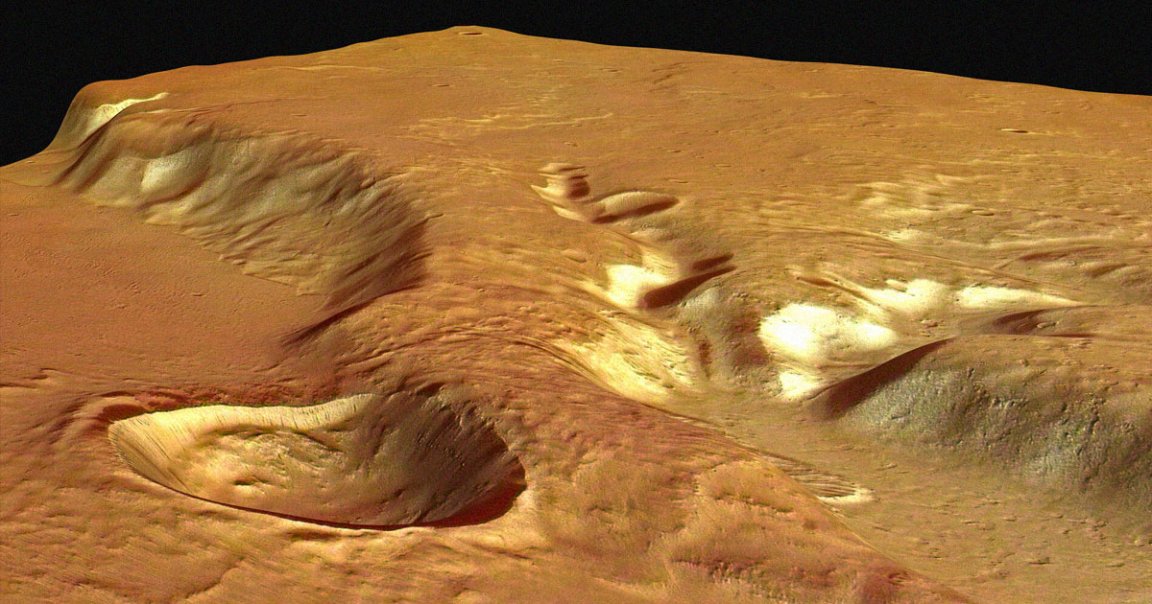
New data from the European Space Agency’s Mars Express orbiter suggests a massive deposit called the Medusae Fossae Formation (MFF) holds enough water ice to cover the entire planet in an ocean that’s anywhere from five to 8.8 feet deep — if it were somehow melted, that is.
Scientists had previously held that there was still a chance the deposit was largely made of volcanic ash. But given the latest findings, it’s far more likely to be made of water ice, especially given its geographical features that resemble those found at the planet’s polar ice caps.
“Dry material, no matter what it is, just doesn’t fit,” Smithsonian Institution senior scientist Tom Watters, the lead author of a new paper published in the journal Geophysical Research Letters, told New Scientist of the research. “We just can’t come up with another material other than water ice that fits the electrical properties, that also has this layering that we’re finding.”
It’s a particularly exciting new discovery as it represents the largest deposit of water ice found near the Red Planet’s equator, making it an exciting potential location for future explorers to visit.
“We’ve explored the MFF again using newer data from Mars Express’s MARSIS radar, and found the deposits to be even thicker than we thought: up to [2.3 miles] thick,” said Watters in an ESA statement about the work. “Excitingly, the radar signals match what we’d expect to see from layered ice, and are similar to the signals we see from Mars’s polar caps, which we know to be very ice rich.”
The surface of the formation is made of geographical features that were likely formed by wind, which measure hundreds of miles across and several miles tall.
While initial measurements from back in 2007 suggested the possibility that the region was made of water ice, scientists couldn’t rule out that it was a massive accumulation of windblown dust, volcanic ash or sediment instead.
“Given how deep it is, if the MFF was simply a giant pile of dust, we’d expect it to become compacted under its own weight,” said coauthor Andrea Cicchetti of the National Institute for Astrophysics, Italy, in the statement. “This would create something far denser than what we actually see with MARSIS.”
Their conclusion: the MFF is made up of layers of dust and ice.
But there’s one big problem: the formation’s ice deposits are trapped underneath several hundred feet of dust or ash, making it difficult to reach for any future Mars explorers.
And plenty of questions remain.
“This latest analysis challenges our understanding of the Medusae Fossae Formation, and raises as many questions as answers,” said Mars Express project scientist Colin Wilson in the statement. “How long ago did these ice deposits form, and what was Mars like at that time?”
“If confirmed to be water ice, these massive deposits would change our understanding of Mars climate history,” he added. “Any reservoir of ancient water would be a fascinating target for human or robotic exploration.”
More on Mars water: Chinese Rover Finds Evidence of Liquid Water on Mars